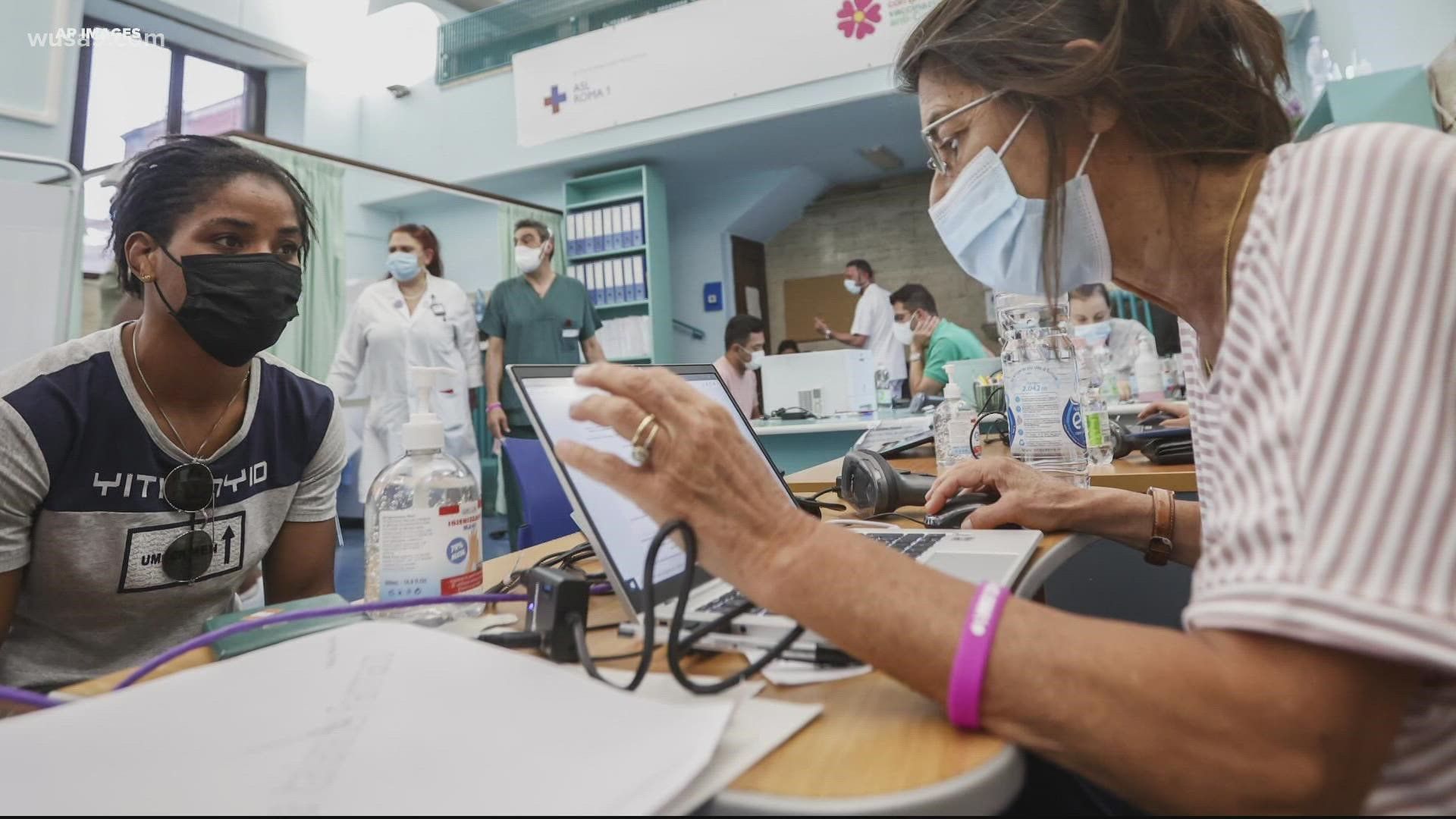WASHINGTON — After more than a year of adjusting to life during a pandemic, many Americans are itching to get back to normal. But with daily vaccination rates on the decline, lots of people are confused about how to pinpoint when we might see the end.
A Verify viewer emailed the team asking for specifics.
"What metrics will determine when the pandemic is over?" she asked. "Is there a data target of sorts? How will it be judged to be over?"
The Verify team brought her questions to our experts.
THE QUESTION
What metrics will determine when the pandemic is over?
THE ANSWER
For the most part, low levels of infections, hospitalizations and deaths will frame a return to normalcy. Communities, states and countries will reach an "end" at different times.
SOURCES
- Dr. Stephen Kissler - Postdoctoral Research Fellow in the Department of Immunology and Infectious Diseases at the Harvard T.H. Chan School of Public Health
- Dr. Linda Nabha - Infectious Disease Expert with the University of Pittsburgh
- World Health Organization
WHAT WE FOUND
"Pandemics don't end in a bang, but in a whimper," according to Dr. Stephen Kissler.
There isn't one thing or one day that will signify that a pandemic has ended. It will end, eventually, but the ending will look different in different places at different times. Dr. Linda Nabha said it'll be based on a couple different metrics on top of just infection rate.
"We look at deaths: how many people are dying of this illness?" Dr. Nabha said. "We look at hospitalizations: how many people are being hospitalized from it or having chronic issues related to the infection."
Vaccinations, and in turn herd immunity, will play a huge role in bringing those rates down. But, Dr. Kissler believes it's unlikely those numbers will get to zero any time soon.
"Instead, what I think we'll be looking for is something where COVID poses a similar risk on a population level as other things that we're familiar with," Kissler said. "Flu is a really good example here, where we have enough people vaccinated, and where we've especially vaccinated the most vulnerable to severe disease and death."
We have the infrastructure to deal with a virus that still circulates and spikes in the colder months. Dr. Kissler said we can look to influenza as an example of what our COVID future could look like.
"The paradigm of flu where we have sort of a major pandemic, and then it's followed by seasonal circulation of related viruses for a very long period of time where we need booster shots to keep mortality low, is probably the best example that we have so far," Kissler said. "The good thing about that is that we have a lot of practice with this. We know what it takes to ramp up the vaccination and distribution annually for a respiratory virus."
Dr. Anthony Fauci said on "Meet The Press" on May 9 that it's possible masks could become a seasonal norm, and the U.S. could still see small "blips" of COVID-19 cases in the future.
All of these factors together will bring us to some sort of end. However, where you are in the world will determine when you'll get to that point. Pandemic implies worldwide spread; so until the virus is under control around the world, in countries with far less resources than the U.S., the pandemic, technically, cannot end.
We can look to current viruses to see exactly what that means. Kissler said he believes that HIV and Tuberculosis are still active pandemics, despite the fact that rich countries like the U.S. have mostly recovered. The WHO says 1.5 million people die from Tuberculosis every year. And in 2019, almost 700,000 died of HIV-related causes.
"The state of affairs in the United States with respect to those two diseases...is quite different than many other countries that have fewer resources and less ability to track the illness and different levels of circulation," Kissler said. "I think that may be what we what we transition into where, under some definition, SARS-CoV-2 will continue to be a pandemic, but in certain countries, especially in well-resourced countries, it will be easy to forget that."
Our experts say it's possible we'll see the same differences in communities with different access to resources within the United States as well. Throughout the entire pandemic, we've seen infection rates in different states spike at different times for different reasons, and that may continue in our return to some form of normalcy.

